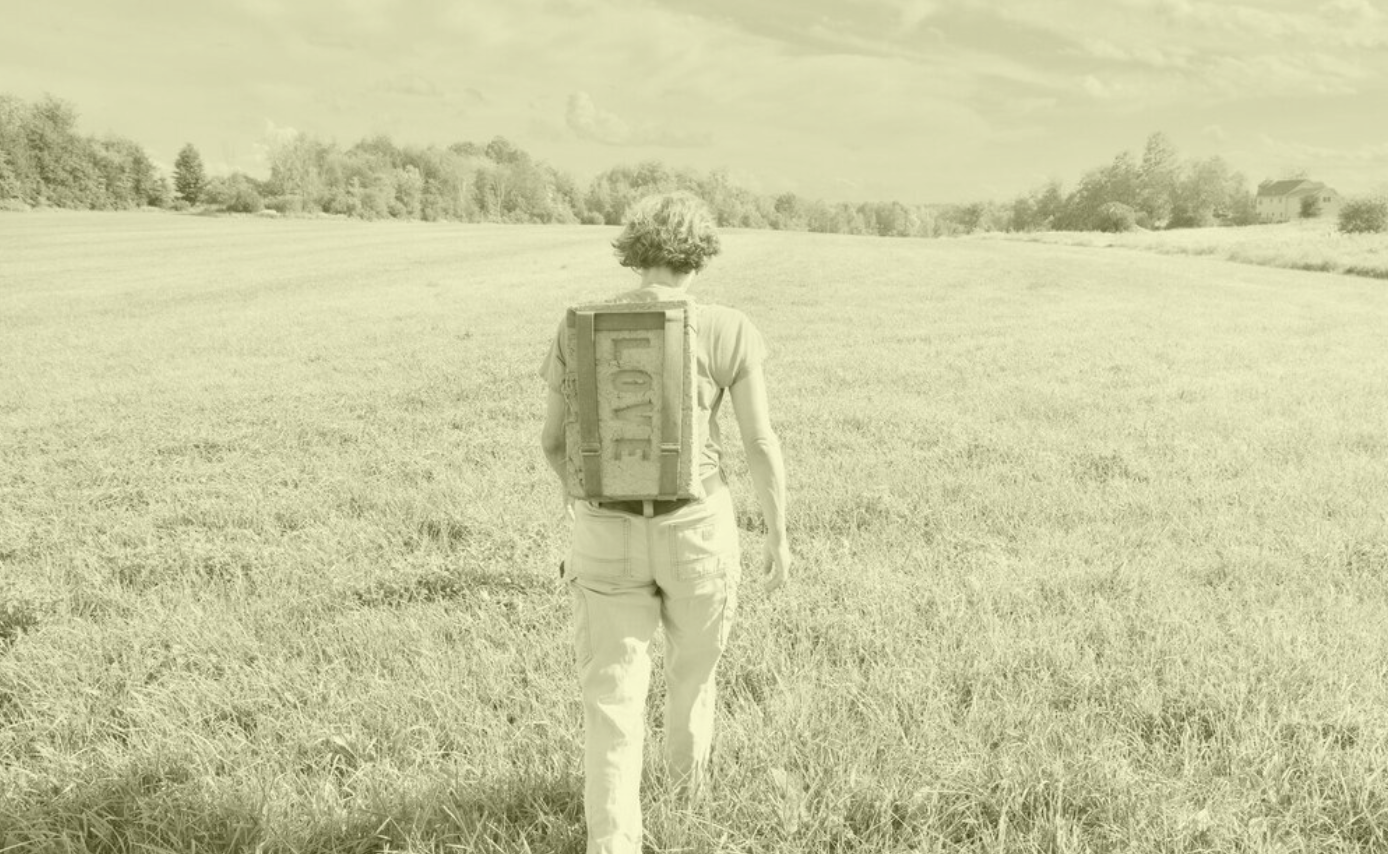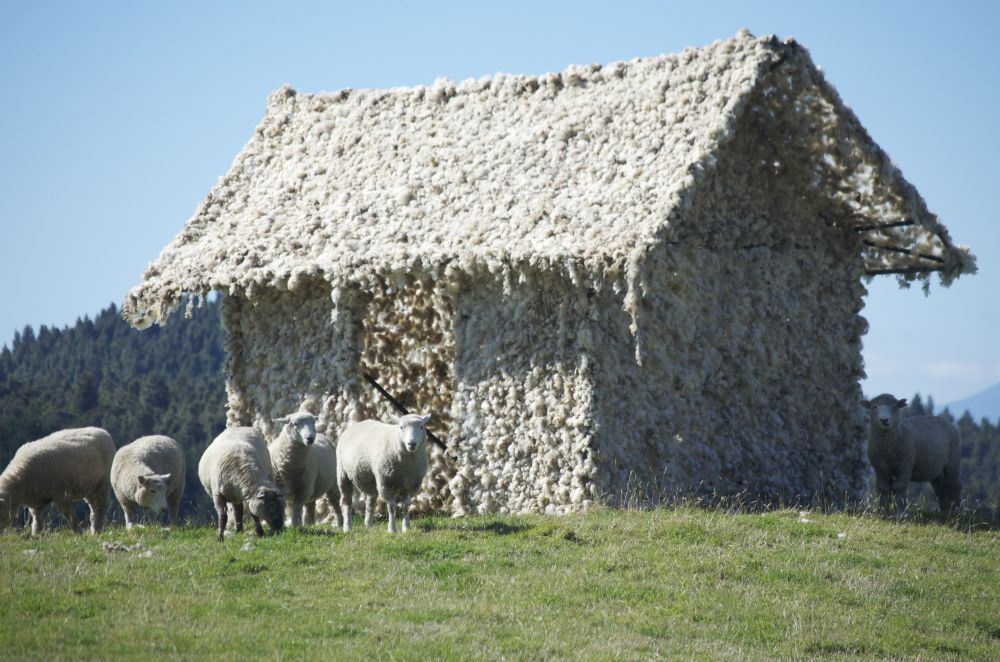
MEMBER SPOTLIGHT
January 8, 2024
This week we recognize Nancy Winship Milliken Nancy Winship Milliken, and her place-based environmental art practice since 2008.
Tika Whare, 2013 (above) is a site-specific installation in Turangi, New Zealand on the Te Hapua farm owned by the Truebridge family. In Maori, Tika Whare (pronounced Teaka Phorae) means true home. "The home is made of materials all found on the farm: bamboo, silage netting, and the wool from the thousands of sheep that surrounded me while I worked out in the paddocks. The flexible structure “breathed” and shifted in the wind as if it was alive, but was stationary among the flock. The sun traveling through the day provided unique lighting through the wool, reminding one of light filtering through the lacy leaves of the forest nearby and the delicate design of Polynesian and Maori art. Subsequently, the transitional sculpture has shifted with the winter winds on the exposed hillside and currently resembles a structural carcass decomposing into the ground. Process is an important part of my art and every morning as I worked in the field with sheep surrounding me I was informed by their interaction with the landscape."
click images for more info
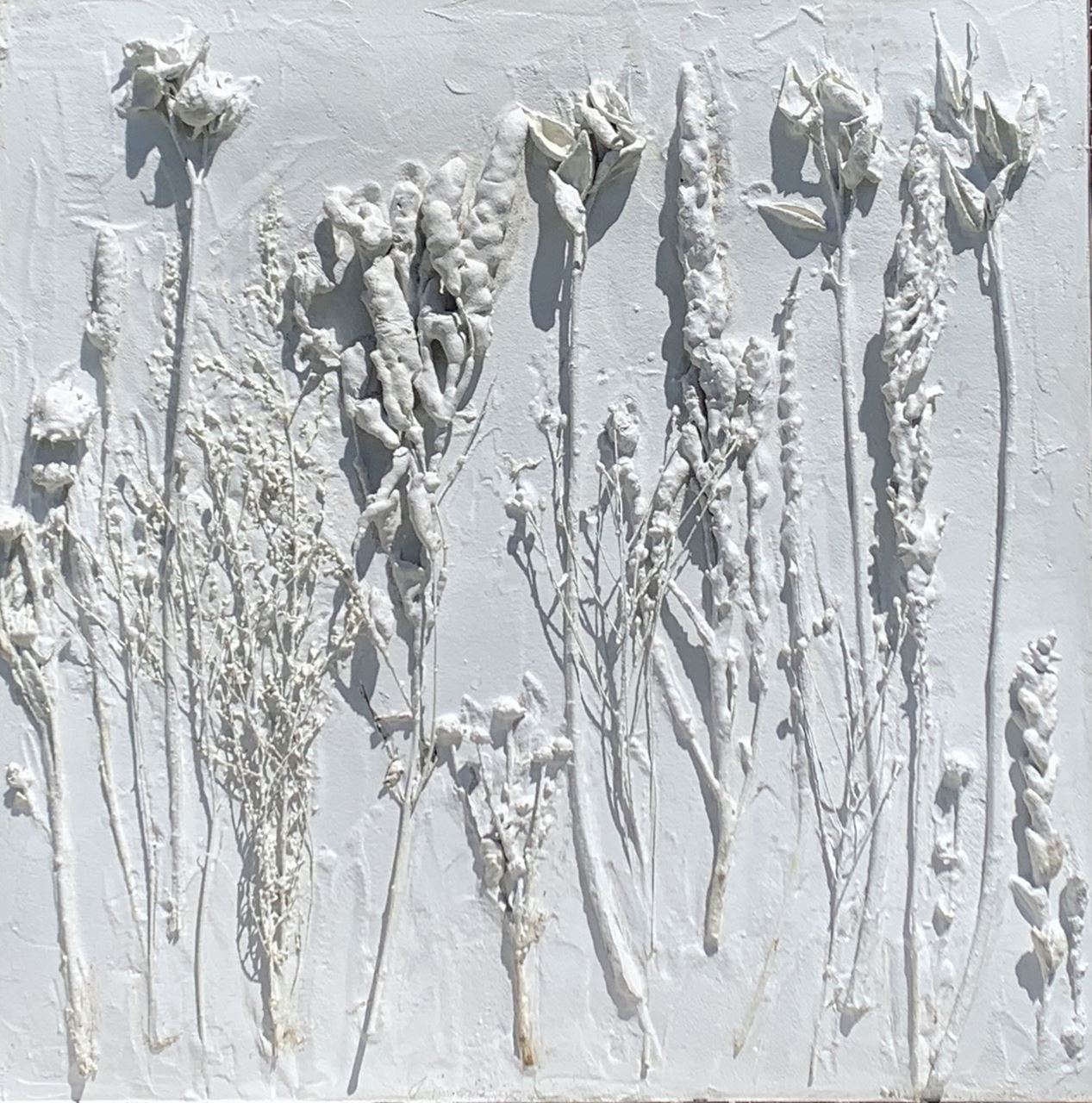
"I pick plants from the fields surrounding the studio and cast them into limestone and sand, materials from our Vermont soils. This act of memorializing the fields (or even a season, if one could do that), of trying to keep the plant’s natural form, then set the field on a pedestal (much like the horses and war heroes in most town and city centers), becomes an act of resistance from the studio. Even the resulting sculpture becomes a carbon sequestering monument, as limestone is part of the carbon cycle-in contrast to the environmentally detrimental hardscape of an urban center (cement and asphalt have a negative impact for the earth). The installation of the indigenous plants of a region will be like having a year round textural stone field, or woodland, in all of its natural abstraction of form. These white limestone memorials/monuments placed in the public sphere, in neighborhoods for example, that once were fields, will reference the long history of humanistic public memorials and monuments of war and community heroes, and honor the landscape that was lost due to human encroachment. It will put nature on a pedestal in an abstract, un-curated form, much like what we see in nature’s natural state. The context of the memorial/monument in a city hardscape melds culture and nature together in a site specific installation."
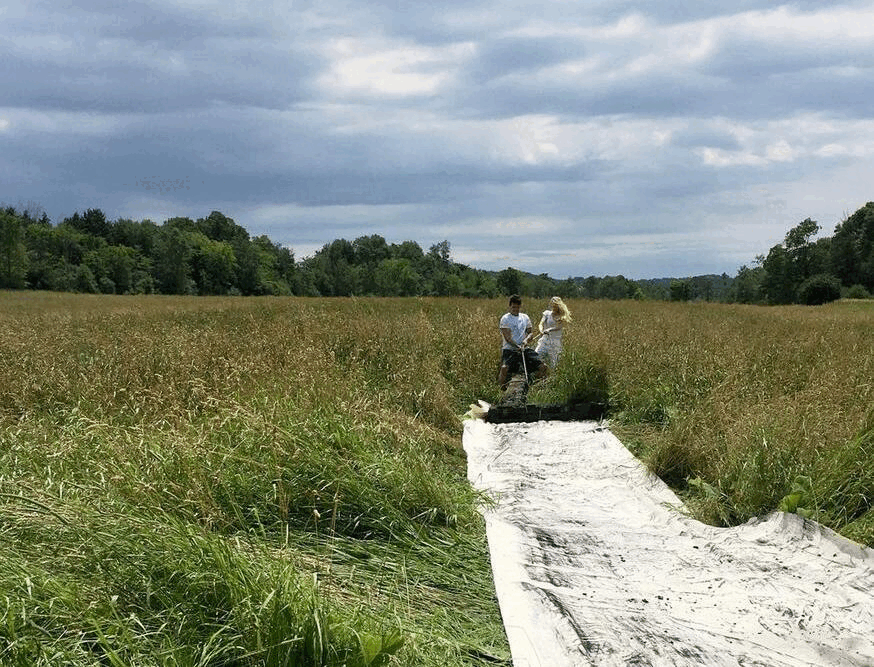
How to turn the charred beams of an historic barn into art? This was the question that Milliken and her collaborator poet laureate Chard deNiord posed to each other as they met near the site of a fire that destroyed an hundred year old dairy barn at Shelburne Farms in Shelburne, Vermont. After several minutes of staring at the beams that had been dragged out of the collapsed barn, Milliken and deNiord settled on the idea of creating an evocative epitaph for the barn— something that both memorialized and elegized the destroyed landmark. deNiord suggested that he and Milliken think about the biblical phrase, "Let the dead bury the dead" as a starting point, acknowledging the futility and even irreverence of trying to create something transformative out of incinerated rafters. Milliken and deNiord then went their separate ways for several weeks in their mutual efforts to find respectful expressions that deferred to the barn's remains speaking for themselves as ruined yet iconic objects. Milliken took the first initiative by removing her hand from her memorial by allowing one of the beams, a synecdoche for the entire barn, to speak for itself as a drag mark on a linen shroud laid out on the field near the site of the former barn. deNiord followed by writing a poem that attempted to do justice to the mark it left.
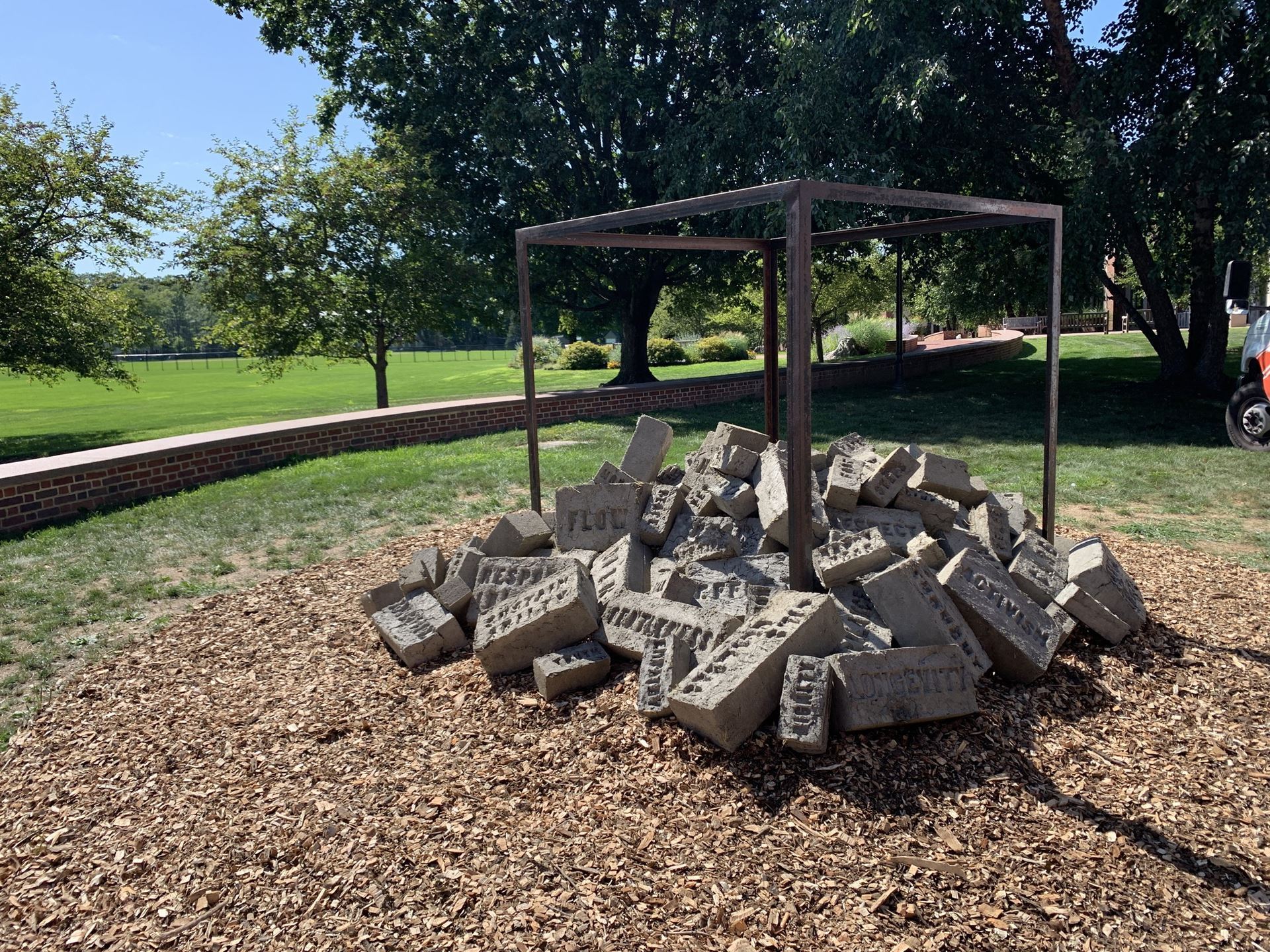
Printing is mark making with pressure, the use of a matrix to impress information on a substrate. Environmentally and socially themed bricks were made collaboratively with farmers, poets, artisans, interns, and the community of Deerfield Academy (above). The process was one of discovery, setting up situations to happen without knowing the outcome. What words would the Deerfield community submit in response to the question “What do you pledge to the earth?” This open method of a sense of wonder is an important approach to be treated with the utmost care and respect in the studio.
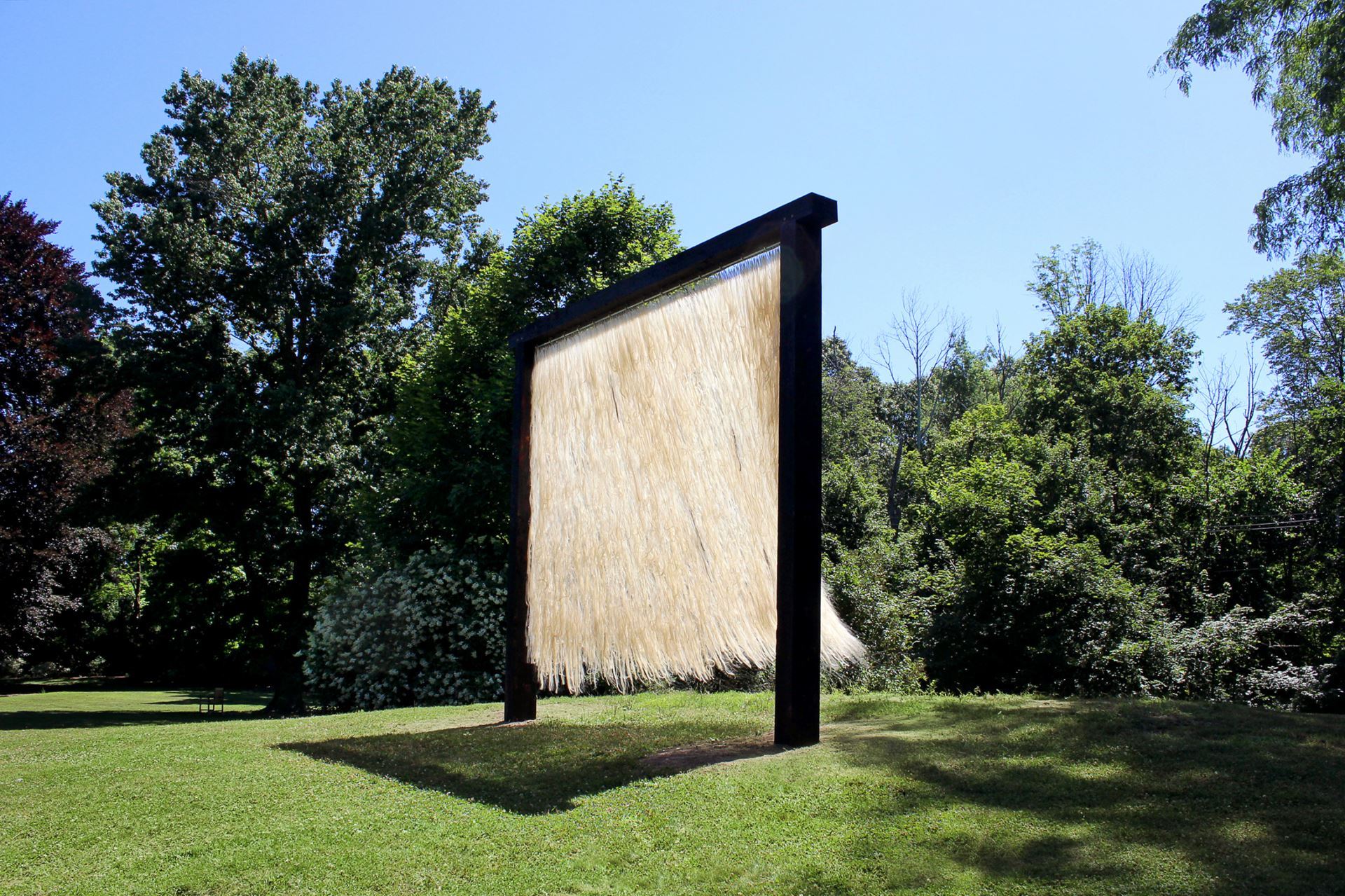
Nancy Winship Milliken maintains a place-based environmental art studio committed to building community through collaborative expressions of reverence for the land, humans, and animals. The artist creates sculpture, installations, prints and photographic enactments concerning the health of the land and surrounding communities, aiding in the desired change for the (socio) environmental course of our society. The practice of her studio is as much about process as it is about object. From finding and harvesting bioregional materials, to molding, weaving, burning into form, our hands and senses “know” the material intimately. The different smells, textures, and raw sensation of making the form is all a part of informing the outcome of the work. For the outside work, once the sculptures are installed, there is a letting go, a handing off of the process to the environmental influences the landscape. The sculptures record the sun, rain, heat and cold, even air pollution in their materials creating a living journal of the elements of the environment. A history of wind. A visualization of time. Her studio is committed to using an artistic platform as an expression of environmental, climate and social change through engagement in community, collaborations, and mentoring creative environmental leaders. This is an open studio inviting artisans, poets, environmentalists, builders, students and farmers, to work together in response to the landscape, people and animals surrounding us. The studio strives to use sustainable and re-claimed materials, often re-using cast off materials from cultural usage or past installations. Milliken received her Masters of Fine Arts from the Massachusetts College of Arts and Design in 2008, and her Bachelors of Science at University of Vermont in 1984. nancywinshipmillikenstudio.com
Featured images (top to bottom): ©Nancy Winship Milliken, Tika Whare (True Home), 2013, bamboo, silage netting, raw wool, 14 x 9 x 8.5 feet, collaborators Truebridge Family, Turangi, New Zealand; Limestone Field Series, 2021-present, StoneField, 2022, 4 x 4 feet, feld plants, limestone, steel; Ribbon, Epitaph for a Barn, 2018, raw canvas, charcoal, 20 x 5 feet, collaborator Chard deNiord, Shelburne Farms, Vermont; Earth Press Project, Pledge, 2019,earth, steel, 7 x 7 x 5 feet, Von Auersperg Gallery, Deerfield Academy, Massachusetts, collaborators Reflex Letterpress, Terra Collaborative, Chard deNiord; Pasture Song, 2018-2022, post and beam charred timber, netting and horse hair (re-claimed cello bow hair), 15 x 17 x 1.5 feet, DeCordova Museum, Lincoln, Massachusetts; Portrait of the artist walking in her studio field in Vermont. All images courtesy of the artist.
